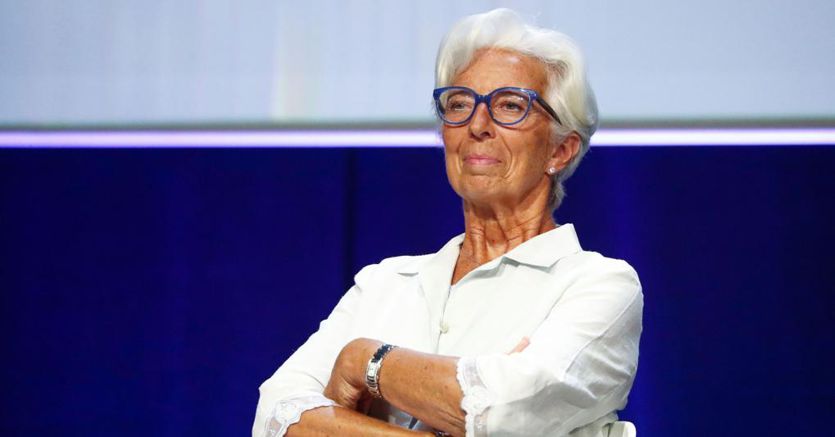Inflation in strong but temporary rise
There are then many factors at play. Inflation, first of all, which in August suddenly touched 3%, a value last abandoned in 2011, with a core inflation at 1.6%, the highest since 2013. Inflation expectations, measured by inflation rate swap 5y5y, which refer to the period 2026-2031, were affected, but started from very low levels. Now they are aiming for 1.7% and together signal – at least at the moment – a price dynamics that are still too slow but also the exit from the phase in which it was feared an anchoring of expectations in a range between 1% and 1.5% (with inflation at 2%, expectations must remain anchored at 2%). Looking ahead, the ECB models nevertheless foresee a new slowdown in the dynamics of prices.
Euroland in the middle of the ford
These are the underlying circumstances, which do not seem to call for haste in closing the emergency programs. Growth, on the other hand, is still far from pre-pandemic levels, even though the spring recovery looked rather bright. GDP has exceeded the level of June 2020, but still lags behind the long-term trend, interrupted by decidedly exogenous factors, such as the epidemic and lockdowns.
Shooting priority
In this phase, the ECB – despite relatively low unemployment (but, again, altered by factors that are certainly not normal) – can certainly concentrate on the real side of the economy, in full compliance with its monetary objective. Even if the “hawks” objection – why continue to overstimulate demand when inflation signals that it is already higher than supply – should nevertheless not be underestimated, nor considered as ideologically motivated.
Yields still low
The level of market rates – which is already affected by investor expectations – is above the lows reached in December, but remains lower, despite a faster-than-expected economic recovery compared to June. Is this an appropriate level, also taking into account the outlook for inflation? This is where the differences between hawks and doves become really relevant: looking at the long term, and at the future slowdown in prices, a tightening of these monetary conditions does not seem strictly necessary, while different considerations – no longer short-term, but of overall uncertainty : on the trend of the economy and the cost of living and on the overheating of prices and quotations – could suggest a gradual increase in market rates.
Loans slowing down
Downstream of the monetary policy transmission chain, while the cost of credit has remained relatively stable everywhere for a year now – it has fallen only in Italy, where it has been at its lowest since 2003 – the trend in loans only indicates a moderate level, even if stable, growth after the leap of the first lockdown, when governments tried to “hibernate” the economy to allow it to overcome the pandemic with limited collateral damage. There is neither overheating nor a risk of economic contraction (although the level of public and private debts will remain an important constraint in the coming years), but growth still needs to be sustained.
